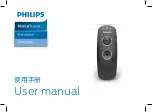
MIDI Mode
The Transmit (XMIT) Page
10-4
of RAM objects) when you start. Otherwise the button presses you make on the Þrst device may
execute other functions on the second device.
Much more useful is to send streams of button presses to your sequencer. When you dump
them from your sequencer back to the K2vx, the K2vx responds as if the buttons were actually
pressed. This enables you to set up a variety of Òmacros,Ó which are strings of commands that
can be executed all at once by a single initial command. For example, you can record a sequence
of button presses that enters Disk mode, selects a speciÞc SCSI device, and loads one or more
banks of samples while you do something more entertaining. Again, itÕs important to keep in
mind that the state of your K2vx must be identical to its state when you recorded the sequence
of button presses. If youÕve added or deleted any objects stored in RAM, for example, the
sequence of button presses will select different objects when you play back the button press
sequence.
Note: Make sure this parameter is set to Off before you initiate a SysEx dump of any kind. If
this parameter is On when you start a dump, the buttons you press to begin the dump will also
generate SysEx messages, which will probably corrupt the SysEx dump.
Volume (V)
This parameter acts as a global override to the "V" parameter on the Setup Editor page
(described on page 7-4). When the "V" parameter is off, the K2vx will not transmit initial
volumes when Setups are selected.
Physical Control Parameters
Mod Wheel, Foot Switches 1 and 2, Continuous Control Pedal (CPedal),
Controller Slider (Slider), and Mono Pressure (Press)
The remaining parameters on the MIDI XMIT page are relevant only when the value for the
Local Keyboard Channel parameter on the MIDI mode RECV page matches the transmitting
channel of your MIDI controller. In that case, these MIDI control messages, when received by
the K2vx, are remapped to the controller numbers deÞned by the values for these parameters,
and sent to the MIDI Out port. See the discussion of the Local Keyboard Channel parameter in
the next section for a full explanation.
The settings for Mod Whl, FtSw1, FtSw2, CPedal, Slider, and Pressure are overridden when you
enter Setup mode or select a setup in Quick Access mode. The values on the XMIT page donÕt
change, but the K2vx uses the currently selected setupÕs MIDI transmit settings instead. The
MIDI mode settings take over again when you return to Program mode, or select a program in
Quick Access mode.
You may never need to change the default settings for these parameters, but doing so may
enable you to increase the ßexibility of your MIDI system if you have MIDI devices connected
to the K2vxÕs MIDI Out port.
Содержание K2500RS
Страница 12: ...Table of Contents TOC 12...
Страница 16: ...Introduction How to use this manual 1 4...
Страница 32: ...User Interface Basics The Panel Play Feature K2vxR 3 8...
Страница 106: ...Effects Mode and the Effects Editor Configurations and Parameters 9 24...
Страница 186: ...Song Mode Recording Multi timbral Sequences via MIDI 12 52...
Страница 304: ...DSP Functions Hard Sync Functions 14 52...
Страница 394: ...Programs Setups and Keymaps K2500 ROM Keymaps 21 12...
Страница 402: ...LFOs LFO Shapes 23 4...
Страница 406: ...Note Numbers and Intonation Tables List and Description of Intonation Tables 24 4...
Страница 434: ...DSP Algorithms 26 14...
Страница 450: ...MIDI and SCSI Sample Dumps SMDI Sample Transfers 29 8...
Страница 464: ...Glossary 31 6...
Страница 490: ...K2vx Program Farm VOX K25 Appendix A 22...
Страница 494: ...K2vx Compatibility Converting programs from the K2vx to K2000 Appendix B 4...
















































